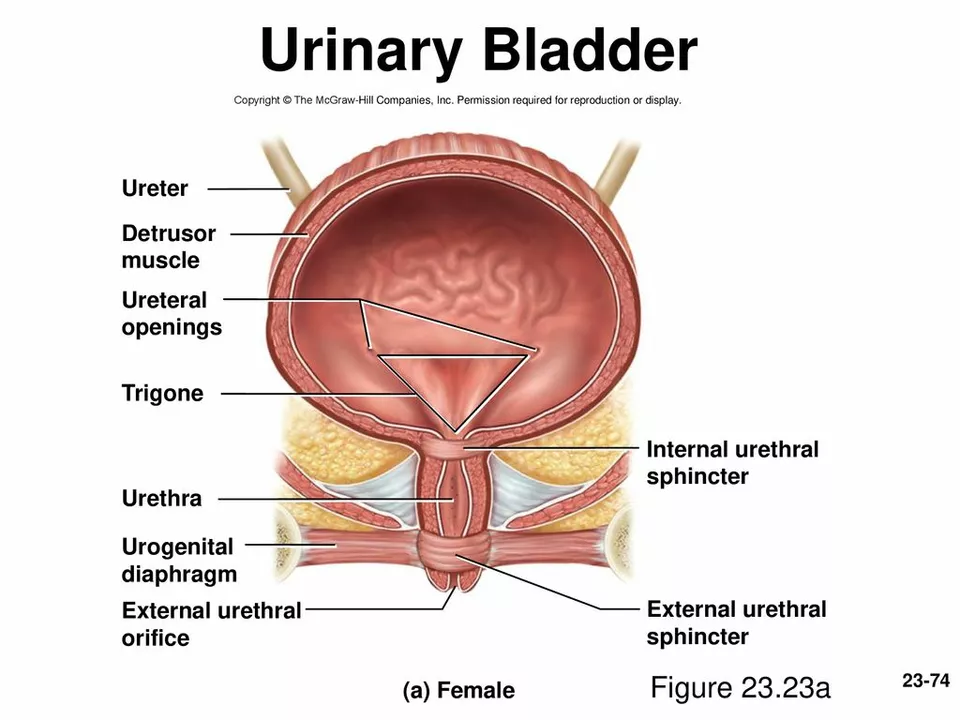Noticing a bulge or pressure in your vagina? That could be bladder prolapse, also called a cystocele. It happens when the wall between the bladder and the vagina weakens and the bladder pushes down. You don’t always need surgery — many people improve with simple steps. This page tells you what to watch for, what your options are, and what you can do today.
Childbirth is the most common cause. Vaginal delivery stretches and can damage the pelvic floor muscles and connective tissue. Menopause and falling estrogen levels make tissues thinner and weaker. Other risk factors: chronic constipation, heavy lifting, long-term coughing, obesity, and prior pelvic surgery. Genetics matter too — some people are born with looser connective tissue that makes prolapse more likely.
Symptoms vary. You may feel fullness or a bulge in the vagina, need to push on the vagina to start peeing, leak urine when coughing, or feel frequent urinary infections. Some people only notice discomfort during sex or a dragging feeling after standing long periods.
Start with the least invasive options. Pelvic floor muscle training (Kegels) helps a lot when done correctly. How to do Kegels: squeeze the muscles you’d use to stop urine, hold 5 seconds, relax 5 seconds, do 10 reps, three times a day. If you’re unsure you’re doing them right, a pelvic floor physiotherapist can teach you.
Pessaries are removable devices fitted by a clinician. They support the bladder and can relieve symptoms immediately. Pessaries are a good choice if you want to avoid surgery, plan pregnancy, or need a temporary fix.
Hormone creams (local estrogen) may help postmenopausal women by improving tissue quality. Weight loss, treating chronic cough, fixing constipation, and avoiding heavy lifting lower chances of worsening the prolapse.
When non-surgical measures don’t help or symptoms are severe, surgery is an option. Common procedures repair the front vaginal wall (anterior repair or colporrhaphy). Some surgeries use the patient’s own tissue, others use mesh — mesh can help but has higher complication risks, so talk with your surgeon about pros and cons and follow current guidelines.
Recovery after repair varies. Expect several weeks of reduced activity, no heavy lifting, and follow-up checks. Ask your surgeon about realistic recovery times for your age and health.
When to see a doctor now: sudden inability to pass urine, heavy bleeding, fever, or severe pain. Also see a clinician if everyday activities are limited or leaks and repeated infections are disrupting life. Good questions to ask: what caused my prolapse, which non-surgical options would fit my life, what are the risks of surgery for me, and what results can I expect?
Small changes can make a real difference. Try pelvic floor training, treat constipation, and get a pessary trial if you want a quick fix. If you need more help, a specialist can guide you through safe surgical choices. You don’t have to live with the discomfort—help is available.

As someone who has been researching bladder health, I recently discovered the connection between bladder prolapse and difficulty urinating. Bladder prolapse, also known as cystocele, occurs when the bladder's supportive tissue weakens, causing it to drop and press against the vaginal wall. This can lead to difficulty urinating, as the bladder's position and function may be compromised. In some cases, this may result in incomplete emptying of the bladder and an increased risk of urinary tract infections. It's important to be aware of this connection and seek medical advice if you're experiencing any difficulty urinating or other related symptoms.